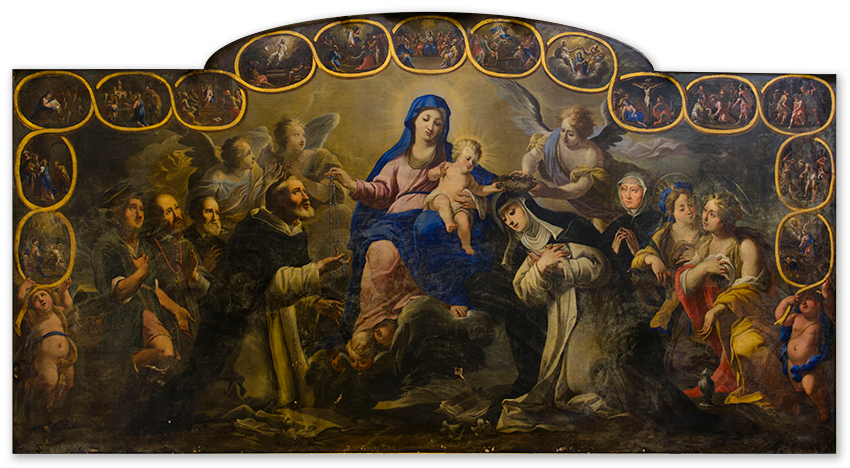Madonna of the Rosary

Curiosity
The origin of the iconography of Madonna of the Rosary is linked to the apparition of Mary to Saint Dominic in 1208; Pope Gregory XIII officially established to celebrate this event on the 7th October.


Colour ranges
The shades of the painting are tenuous with pastel nuances, as well as the use of gentle shimmering effects on the angels’ clothing who are surrounding the figure of Mary and the Child. The bulk of the tones vary with ranges of grey, creating a general sense of chromatic mellowness. Mary’s typical blue cloak stands out, as well as a touch of blue on the right side and in the ovals.


Analysis of light
The work has a double source of light: the first coming from the aura and uniformly radiating the faces of the figures on the sides, and the second one illuminating Mary, the Child and the whole group of people on the right including the Countess


Study of the composition
On the opposite sides of the painting, two chubby little angels are holding a frame with fifteen ovals showing the Mysteries of the Rosary. The weight of the composition is central and symmetrical, and all the lines and gazes converge towards Mary, strengthening her centrality. Moreover, an inner triangle encloses the Mother and her Child, while a larger triangle contains the two Saints.
Anonymous Lombard first half of the XVII century oil on canvas 164x306 cm